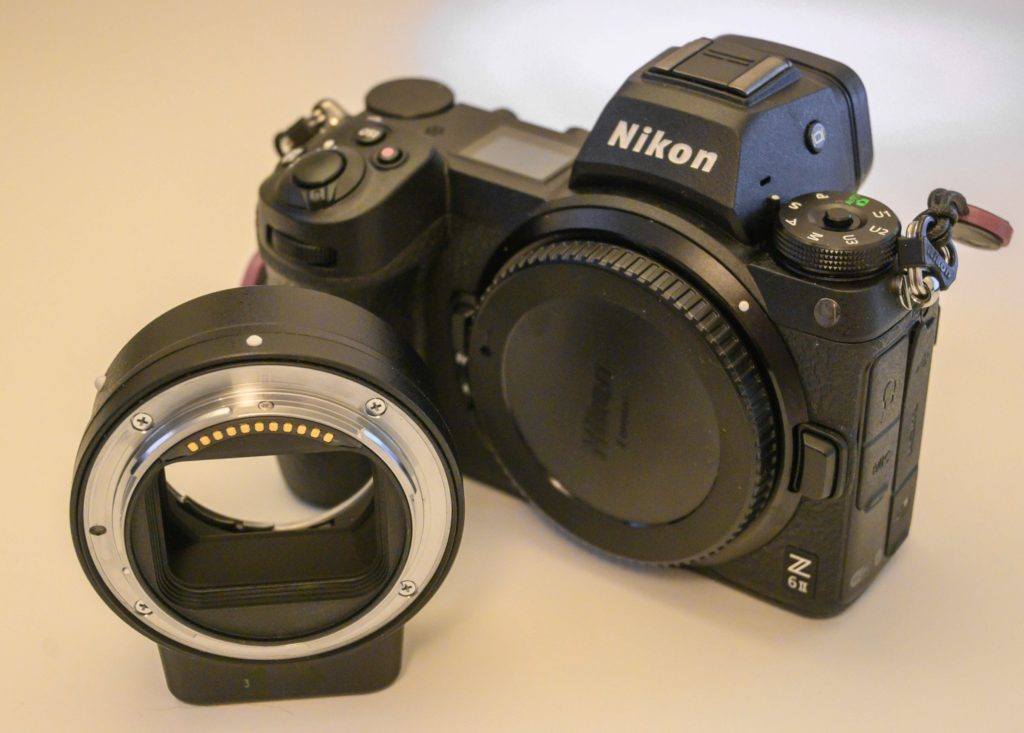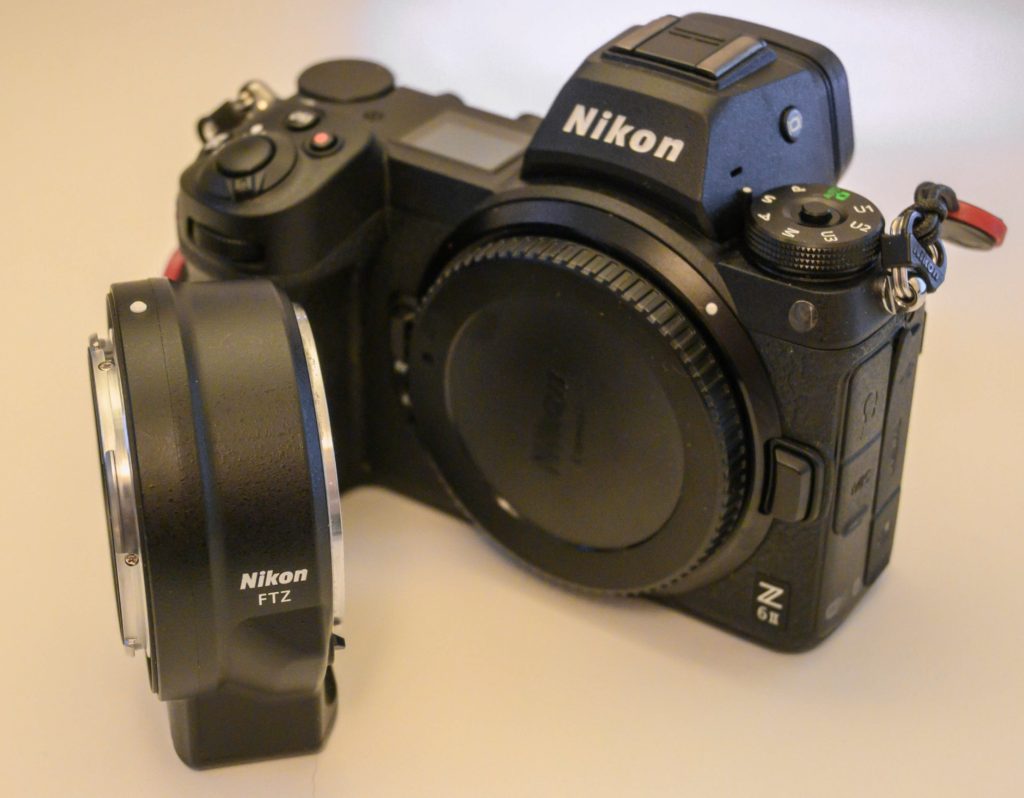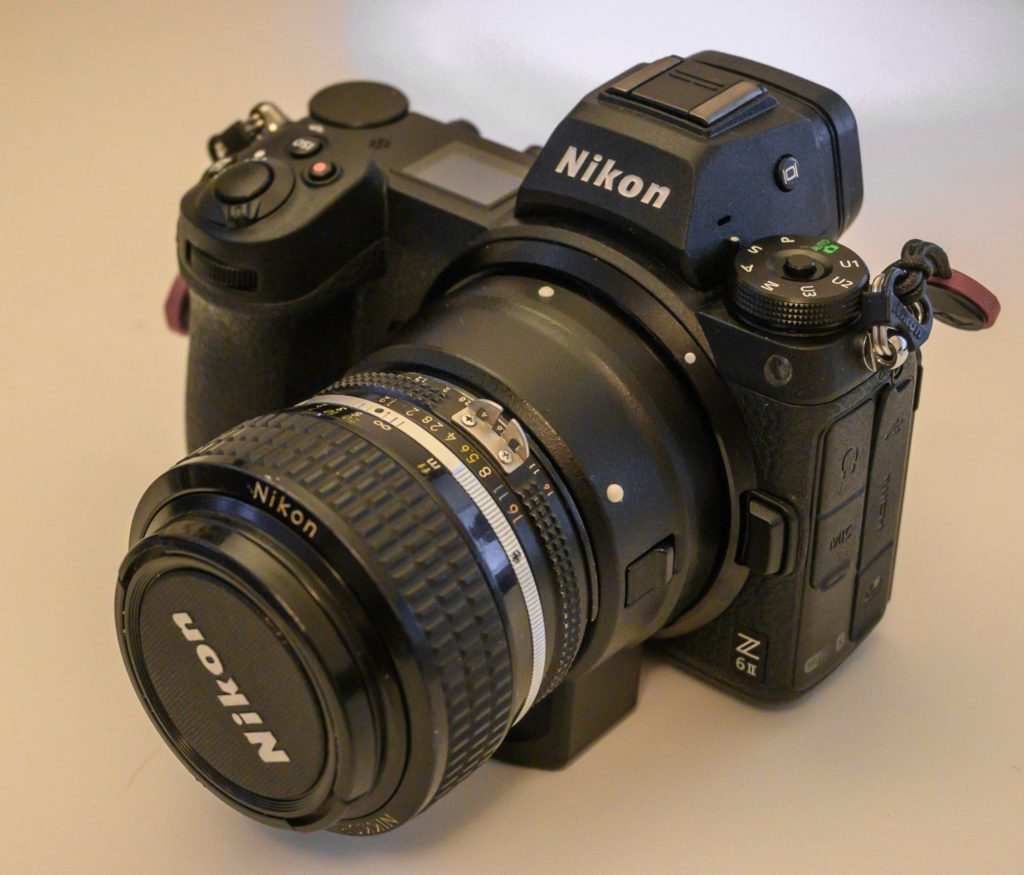The go-between solution
When Nikon launched their mirrorless camera series, they did so introducing a new lens mount called the Z-mount. It was a brand new design with a larger diameter than the classic F-mount and also it had a much shorter flange distance, both – according to Nikon – to improve image quality.
The new Nikon Z-mount is only compatible with a brand new line of lenses, known as the Z-mount lenses or S-lenses. These lenses fit directly to the Z-mount. As all the S-lenses have motors built into them, there is no need for a focus motor in the mirrorless camera bodies.
In order to give some backward compatibility with all the good glass made from the middle of the former century and still being made today, Nikon decided to market an adapter, the so called FTZ adapter, or the F-mount to Z-mount adapter. It was probably also because the amount of glass available to the Z-mount was very limited when the ML series was new, so many focal lengths were simply not available for the Z-mount previously.

The FTZ-adapter allows you to shoot with all the glass that is made for the F-mount, as the adapter takes F-mount glass on the front and fits to the Z-mount on the back. The only downside of this adapter, other than the price of it and that is slows down AF speed a little bit, is that it has no focus motor built into it. All the glass with mechanical auto focus is dependent upon a motor in the camera body, and hence you are left with manual focus for these lenses. AF-S glass with the motor built into the lens of course auto focuses as it should, but many will probably hold on to their DSLRs to maintain auto focus for AF and AF-D glass.

Many have speculated that Nikon would produce a FTZ-adapter with a motor built into it, but I doubt it will happen. Nikon did produce a FTZ adapter version 2, but this one is specifically designed for the Z9 camera body, and still has no motor built into it.

So my best guess – and it is a guess – is that we will not see mechanical auto focus motors in the FTZ-adapter. I think Nikon finds that you have lots of aid in focusing manually in the ML system, if you insist to use vintage glass with the mirrorless cameras.
So the FTZ-adapter is relevant if you have F-mount glass that you love and want to hold on to, and at the same time want to upgrade to a mirrorless camera body. Other than giving you the benefits of a mirrorless camera relative to a DSLR, it also opens up a new (and expensive) world of S-series glass that in most cases have got excellent reviews for stunning results.

Thank you for the informative video. Does the FTZ (or FTZ II) adapter alter the focal length and f-stop of F-mount lenses? I see no lens in the adapter. Presumably, the adapter positions the back plate of the lens to be at the correct distance from the sensor required for the F-mount lens design. Is that correct?
Hi Mike, than you for your question! You are right; you see no lens in the adapter. It is by and large a metal ring. The adapter has 2 roles: one is that the Z-mount is larger than the F-mount, so it bridges the two sizes and makes it possible to mount the F-mount lenses on a Z-body. The other is, as you note, to increase the distance between the sensor and the rear of the lens, so that it matches that found in a DSLR body. If the engineers have done their job properly and implemented an adapter with the right size, then no, there should be no changes to the focal length and aperture. All the best!